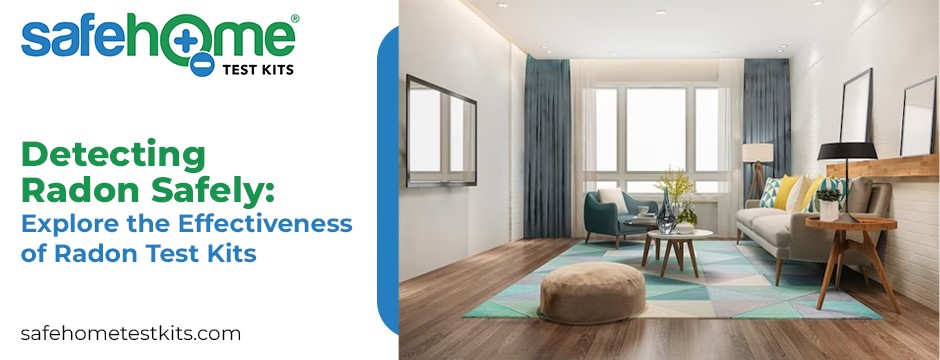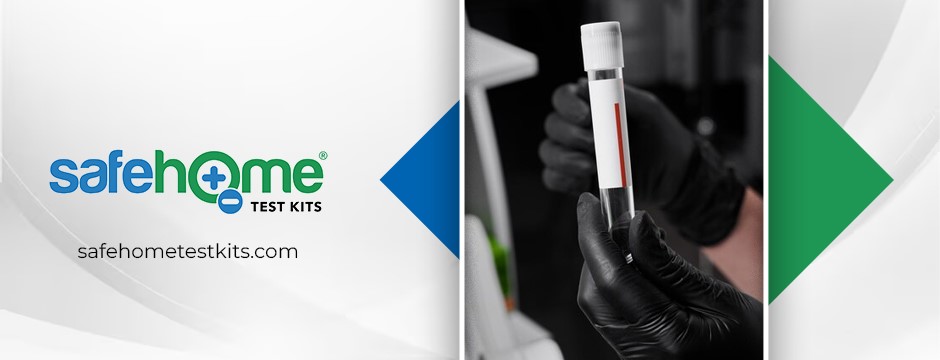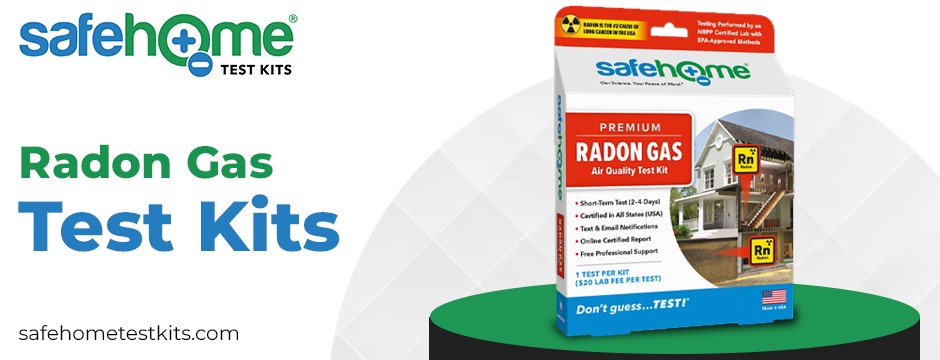Detecting Radon Safely: Explore the Effectiveness of Radon Test Kits

Radon, a colorless and odorless radioactive gas, poses a serious health risk when it accumulates indoors. It is a natural byproduct of the decay of uranium in soil and rock and can seep into homes through cracks and gaps in the foundation. Long-term exposure to elevated levels of radon has been linked to lung cancer, making it imperative for homeowners to test for this silent threat regularly. Radon Gas Test Kits have become popular for detecting radon levels, but their effectiveness varies. In this particular blog, you will be able to delve into radon testing, explore the different types of radon test kits available, and assess their accuracy.
The Importance of Radon Testing
Radon and Health Risks: A Looming Danger
Lung cancer is primarily caused by radon, with smoking being the primary cause. According to statistics from the U.S. Environmental Protection Agency (EPA), radon causes roughly 21,000 lung cancer deaths annually. Unlike other pollutants, radon’s threat is not immediate; it accumulates over time, making regular testing essential for early detection and mitigation.
The Role of Radon Test Kits: A Convenient Solution
Radon Gas test kits have gained popularity as an affordable and accessible means of monitoring indoor radon levels. They provide homeowners with the ability to assess the risk within their living spaces without the need for professional intervention. However, the effectiveness of these kits can vary, prompting a closer look at the different types available and their reliability.
Understanding Radon Test Kit Types
Short-Term vs. Long-Term Radon Tests
Radon test kits generally fall into two categories: short-term and long-term tests. Short-term tests typically last between two to seven days and offer a quick snapshot of radon levels. Long-term tests, on the other hand, provide a more comprehensive assessment spanning over 90 days or more. The choice between these two depends on the homeowner’s preferences and the specific circumstances of their living environment.
Passive vs. Active Radon Test Kits
Passive radon test kits are the most common and cost-effective option. They rely on the natural processes of radon decay to measure levels over a set period. Passive kits include charcoal canisters, alpha-track detectors, and charcoal liquid scintillation devices.
Active radon test kits, in contrast, use electronic devices to continuously monitor radon levels. These kits often provide real-time data and may offer additional features such as digital displays. While active kits are generally more expensive, they can be advantageous for those seeking immediate and detailed information.

Factors Influencing Radon Test Kit Accuracy
Placement and Duration: The Key to Accurate Results
Regardless of the type of radon test kit used, proper placement and duration are crucial for accurate results. Kits should be placed in the lowest livable area of the home, as radon tends to accumulate in basements and crawl spaces. Avoiding locations with high humidity or direct sunlight is also essential.
The duration of the test is equally important. Short-term tests may be influenced by daily fluctuations in radon levels, such as changes in ventilation or weather conditions. Long-term tests, while providing a more stable average, require patience but can offer a more accurate representation of the year-round exposure.
Seasonal Variations: Understanding Fluctuations
Radon levels can vary throughout the year due to factors like temperature, humidity, and ventilation. Therefore, conducting tests during different seasons provides a more comprehensive understanding of the radon risk in a specific location. Some experts recommend testing during the heating season when homes are typically more closed up, leading to potentially higher radon concentrations.
Radon Test Kit Recommendations
Choosing radon test kits that meet the EPA’s standards is crucial to ensure accuracy and reliability. For those seeking the highest level of accuracy or dealing with complex building structures, professional radon testing services may be a more suitable option. Certified professionals use specialized equipment and follow strict testing protocols to provide precise results. While more expensive than home test kits, professional testing can offer peace of mind, especially in high-risk areas.
Interpreting Radon Test Results
Understanding Action Levels
Interpreting radon test results involves comparing them to established action levels. The EPA recommends taking action if radon levels exceed 4 picocuries per liter (pCi/L). However, even levels below this threshold can pose a risk, and homeowners may consider mitigation efforts for levels between 2 and 4 pCi/L.
Taking Action: Mitigation Strategies
If test results indicate elevated radon levels, mitigation is crucial to reduce the risk of lung cancer. Common mitigation strategies include installing a radon mitigation system, sealing foundation cracks, and improving ventilation. Consultation with a radon mitigation professional can help homeowners determine the most effective and appropriate course of action for their specific situation.

Radon Gas Test Kit – Premium By Safe Home®
Radon, a silent and potentially lethal intruder, threatens homes across the USA. Safe Home® brings you the Radon – Premium Test Kits, meticulously designed for precision and reliability. With easy-to-use supplies, anyone can perform the test hassle-free. Our NRPP-certified lab, adhering to EPA-approved methods, guarantees accurate results.
Trusted by homeowners, contractors, and inspectors nationwide, we maintain NRPP certification in all 50 states, ensuring compliance with rigorous standards for home inspections and real estate transactions. Choose Safe Home® for a quick, accurate short-term test spanning 2 to 4 days. Enjoy a seamless experience with notifications and an online certified report. Our commitment goes beyond testing—we offer free professional support, guiding you every step of the way. With a modest online payment of $20 per sample, you’re not just testing for radon but investing in your family’s health and safety. Don’t let radon compromise your well-being; choose Safe Home® today.
Conclusion: Safeguarding Homes and Health
Radon, a silent and invisible threat, demands proactive measures to ensure our homes’ safety and our loved ones’ well-being. Radon Gas test kits offer a convenient and accessible means of monitoring indoor radon levels. Still, their effectiveness hinges on factors such as test duration, placement, and the type of kit used. By understanding the nuances of radon testing and choosing reliable methods, homeowners can take control of their indoor air quality and mitigate the risks associated with this hazardous gas. Regular testing, informed decision-making, and prompt action are key elements in the ongoing effort to safeguard homes and health from the insidious dangers of radon.


